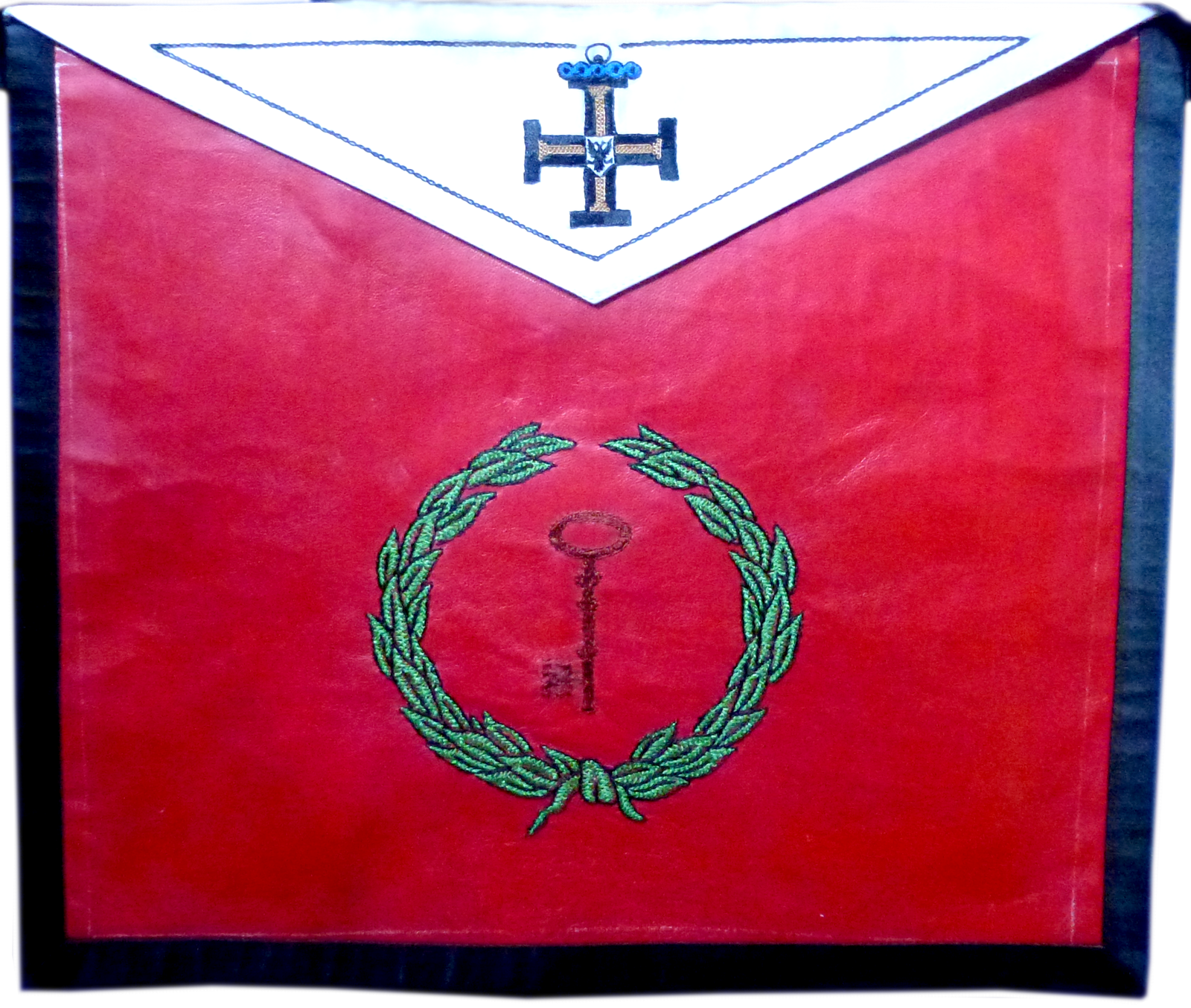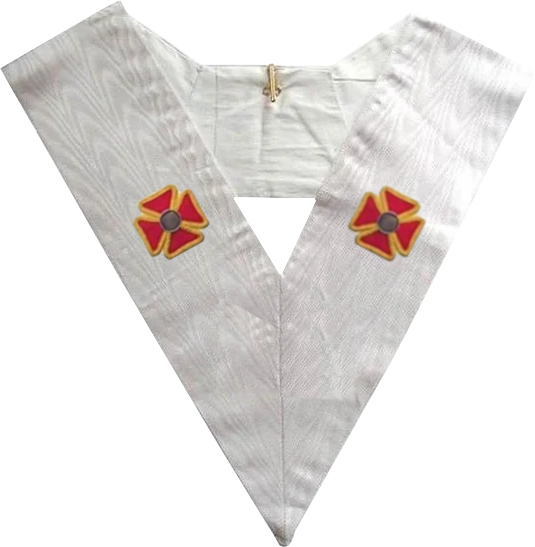ANCIENT & ACCEPTED Scottish rite: 28th° DEGREE –
knight Of The Sun, Or Prince Adept
In Summary:
The 28th degree of the Scottish Rite is known as the Knight of the Sun (or Prince Adept) and is considered to be one of the most treasured and cherished degrees of the rite, as it is deeply philosophical and mysterious in nature. Albert Pike’s “Morals and Dogma”, devotes 219 pages to its mysteries and explanation of its symbolism.
Initial Note:
This degree teaches that our love for God manifests itself in our love for Truth, Justice, and Nobility of Soul.
Regalia Notes:
In the Liturgy, Pike describes the apron thus: “The APRON is square, of scarlet-colored lambskin, lined and edged with black. The flap is white, and on it is a Teutonic Cross described as a cross potent sable, charged with another cross double potent or, surcharged with an escutcheon of the Empire, the principal Cross surmounted by a chief azure,
seme of France; …”.
He is using the terminology of heraldry: ‘potent’ is a word used to describe a cross with cross pieces at the ends, ‘double potent’ means two cross pieces at the ends; ‘sable’ is black; ‘or’ is gold; ‘charged’ means superimposed upon; ‘chief’ means on top of; ‘azure’ is blue; ‘seme’ means strewn or scattered. In the middle of the apron is a black key and around it a wreath of laurel. The laurel symbolizes the good opinion our brethren have for us. The order is a white, watered ribbon edged with red, worn as a collar, from which the jewel is suspended.
The jewel is the Teutonic Cross shown on the apron. There are also gloves and a scarf among the clothing of a Knight Commander of the Temple. The colors of these, as well as of the apron and order, are white, red, and black. The last of these is symbolic of the death of one who will be revealed at a later degree.
Duties are:
• Be devoted to truth, honor, loyalty, justice, and humanity.
For Reflection:
• It is nobler to err and make amends than never to err at all. Is this statement contrary to the virtue of prudence?
Lessons:
• Masonry is practical and requires its members to be actively involved in life. Virtue and duty have been the same at all times.
Important Symbols:
• The colors are scarlet and black, a garland of laurel, circles, and globes, and swords drawn and extended to a central point.
Additional Notes:
In many of the degrees of the Scottish Rite, the candidate is styled as a knight; this, however, is the first of the truly Chivalric Degrees. The flourishing of knight-hood during the Crusades of the Middle Ages, (1,100 – 1,400 A.D.) has been the subject of romantic legends, epic poems, books, theatre, art, and song for over 600 years.
Perhaps the most well-known of the chivalric legends is that of King Arthur and the Knights of the Round Table. King Arthur assembled around him the most virtuous and gallant men. He created them knights and thus devoted them to the causes of right, the poor and needy, and honor. His kingdom became a paradise on earth. This idyllic world came tumbling down when the frailty of the flesh prevailed – a knight fell in love with Arthur’s queen and Arthur’s stepbrother greedily and jealously pursued the throne.
In reality, too, the age of knighthood came to an end as a result of human weaknesses-greed, political and religious corruption, and, in general, the loss of the selfless attitude held by knights and demanded by the rules of chivalry. Despite the fate of knighthood, the chivalric ideal has survived as one of the noblest conceptions of the human spirit and provides support for the ideals of family unity, moral education, honor, and courtesy, all of which Masonry teaches as its duties.
Sources:
Purchase ‘A Bridge To Light‘ by Rex R. Hutchens
Purchase ‘Morals & Dogma‘ by Albert Pike.

‘Knight Of The Sun, Or Prince Adept’
Please view the video on the left, for a more detailed explanation of the 28th° Degree.



